In the museum in Rapa Nui, the diligent visitors can learn everything they have always wanted to know about this particular Polynesian culture, but were afraid to ask… Here you find answers or at least theories to who the people were that created these unique statues called “Moai”. Why were they put up and how? What led to their destruction?
Around 500 BC, people who originally lived on the Solomon Islands and on the islands between them and Tonga & Samoa, set sail in their big canoes on a great colonisation adventure to what is today Tahiti, Marquesas and the Cook Islands. From there, around 400 AD, they set sails again, this time in different directions: the Easter Islands, and later Hawaii and New Zealand.
Hotu Matu’a was the chief of the first group to colonise the island and became its first king. His six sons created the main Mata or tribes that formed the local society. These Mata divided into Ure or groups of families. This society was definitely hierarchic: tribes of high social status lived in the western part, those of lower status in the eastern part of the island.
The Moai and the huge ceremonial centres that surrounded them were constructed to represent the power, prestige and organisational capacity of the clan, but also to honour the ancestors. All except one Moai face inland and thus clearly indicate that they were meant to oversee the daily activities of the islanders.
Those Moai were carved in quarries with simple stone tools and then moved to their Ahu, the platform where the Moai was put on. The question how these huge statues were transported involves 7 different theories: legend says the Moai walked there, whereas scientists basically see sleds and tree trunks as the means of transport.
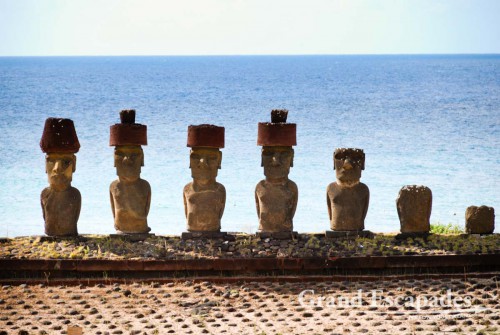
Ahu Akivi is special because its 7 Moai are the only ones that face the sea, Rapa Nui or Easter Island, Pacific
The highest Moai is about 10 meters, but one found in the quarry was 21 meters high. However, this Moai was never moved to its Ahu. There are hundreds of Moai on the island, but the vast majority of them were never finished and never left the quarry.
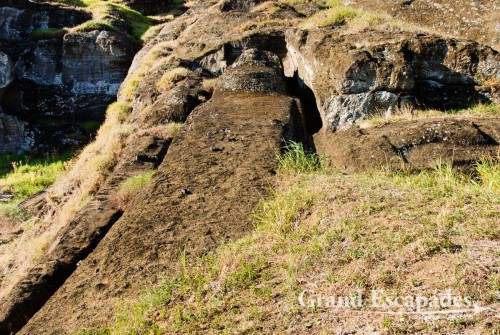
Rano Raraku, the quarry where all the Moai were carved from the volcanic stone – Here the biggest Moai ever built, 21 meters high, Rapa Nui or Easter Island, Pacific
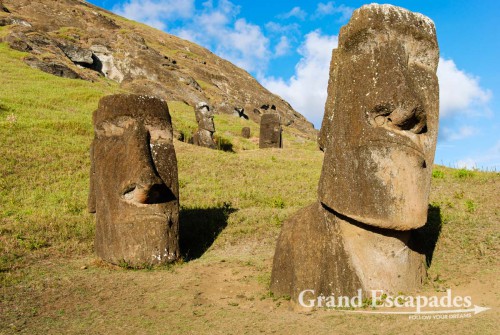
Rano Raraku, the quarry where all the Moais were carved from the volcanic stone, Rapa Nui or Easter Island, Pacific
Several theories stress the fact that transporting those Moai on tree trunks led to a complete deforestation of the island. This resulted in famine and a war between clans in the 17th, 18th and 19th century. During this time, all Moai were toppled. Since they protected all family activities and the territory, their destruction meant to diminish the power of the very Ure.
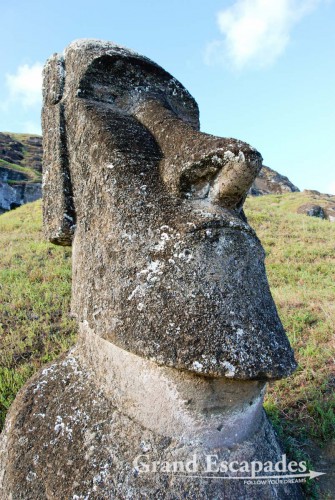
Rano Raraku, the quarry where all the Moais were carved from the volcanic stone, Rapa Nui or Easter Island, Pacific
After the destruction of the Moai, another cult developed: the birdman ritual: men were competing against each other to become the leader of their clan for one year. The last part of the competition retrieved a certain bird egg, thus the name given to the winner. This cult survived until the arrival of catholic missionaries.
The restoration of the Moai started in the 1960s when the Ahu were reconstructed and many of the Moai erected. Most statues were made of tufa, except the eyes. The Moai found in the quarry had no eye sockets, which means these were added once the stature arrived at its place or even after it is erected. But there are also others that were put up, but never had eyes, so-called “sleeping Moai”.
Only one of these eyes was found. There are some statutes were the eyes were added in the process of restoration, but even then they were stolen and had to be cemented into the face in order to survive modern day pilferages.
Another fascinating product of this culture were wooden tablets with engraved symbols representing names, dates and activities. Unfortunately, the meaning of those tablets was lost, when the few people who were able to create them were taken away as slaves and eventually with them died this skill and the knowledge.

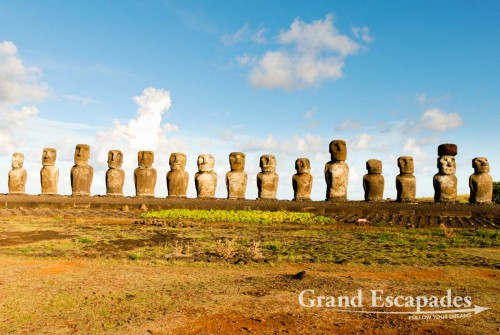
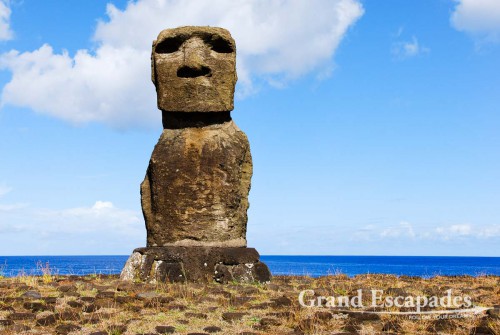
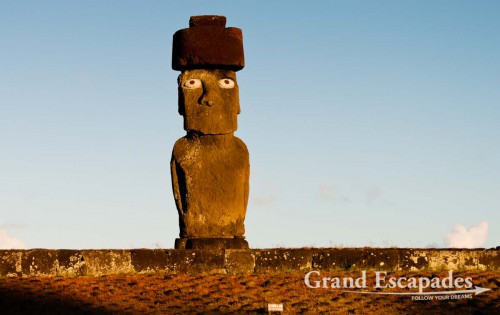
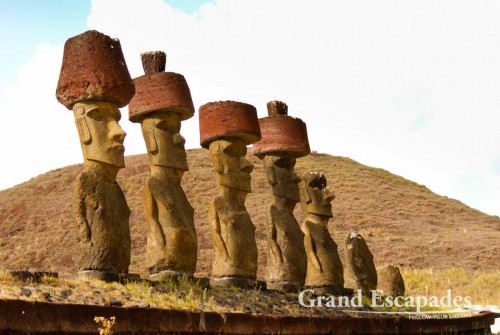
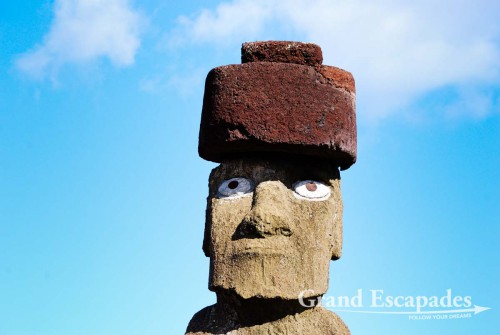
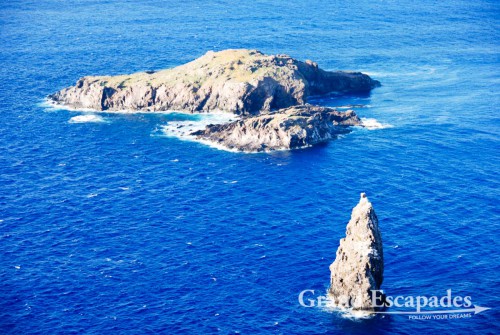
No comments yet.